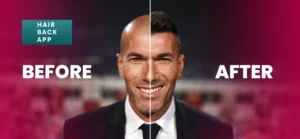Hair growth patterns are a fascinating aspect of human biology, influencing not only our appearance but also our self-esteem and cultural identity.
My name is Emma Wright, your resident hair loss and hair restoration specialist, this article will explore the various aspects of Hair growth patterns, the intricacies of hair growth patterns, the hair growth cycle, and how various elements like genetics, nutrition in hair growth and health, and hair care routines play a role.
Understanding these patterns can help us better appreciate the complexities of hair growth and the factors that affect it.
What is Hair Growth Patterns
Hair growth patterns describe the unique way in which hair grows and is distributed across the scalp. This includes the direction, density, and texture of hair, which are influenced by genetic factors, the phases of the hair growth cycle (anagen, catagen, and telogen), and individual hair characteristics.
Understanding these patterns helps in managing hair care, addressing hair loss, and planning hair restoration treatments.
The Hair Growth Cycle
The hair growth cycle is the continuous process through which hair grows, rests, and sheds, consisting of three main phases: anagen (growth phase), catagen (transitional phase), and telogen (resting phase).
Hair growth patterns are largely governed by the hair growth cycle, which consists of three main phases: anagen, catagen, and telogen.
- Anagen Phase: This is the active growth phase, lasting anywhere from two to seven years. During this time, hair cells divide rapidly, adding length to the hair shaft.
- Catagen Phase: A short transitional phase that lasts about two to three weeks. Hair growth stops, and the hair follicle shrinks.
- Telogen Phase: The resting phase, which lasts around three months. Hair falls out, and new hair begins to grow in its place.
Understanding the hair growth cycle is crucial for recognizing how hair growth patterns develop and change over time.

Factors Influencing Hair Growth Patterns
Now let look at some factors that influence Hair growth patterns ;
-
Genetics
Genetics plays a significant role in determining hair growth patterns. Traits such as hair texture, density, and growth rate are inherited from our parents. For example, individuals with a family history of thick, fast-growing hair are likely to experience similar hair growth patterns.
-
Nutrition
Nutrition in hair growth and health is a critical factor. A balanced diet rich in vitamins and minerals supports healthy hair growth. Key nutrients include:
- Protein: Essential for hair structure, as hair is made up of keratin, a type of protein.
- Iron: A deficiency can lead to hair loss, as iron is crucial for carrying oxygen to hair follicles.
- Vitamins A, C, and E: Important for maintaining healthy hair follicles and scalp.
-
Hair Care Practices
Hair care practices significantly influence hair growth patterns. Proper maintenance, including regular washing, conditioning, and gentle styling, can promote healthy hair growth. Avoiding excessive heat and chemical treatments can also prevent damage that might disrupt the hair growth cycle.
-
Age
As you age, hair growth patterns and density change. Hair typically becomes thinner and grows more slowly with age. The hair growth cycle’s phases may also shorten, leading to more hair shedding and less regrowth.
-
Hormonal Changes
Hormones significantly affect hair growth patterns. Androgens, for example, can lead to conditions like male and female pattern baldness. Hormonal fluctuations during puberty, pregnancy, menopause, and other life stages can also alter hair growth.
Common Hair Growth Patterns
There are three common hair growth patterns:
-
Straight Hair
Straight hair tends to grow faster and appears shinier due to the even distribution of natural oils from the scalp. This hair type is less prone to tangling, making it easier to manage.
-
Wavy Hair
Wavy hair falls between straight and curly hair in terms of texture and growth patterns. It has a natural bounce and volume, which can give the appearance of thicker hair.
-
Curly Hair
Curly hair grows in a spiral pattern, which can make it appear shorter than it actually is. This hair type is more prone to dryness and breakage, requiring careful maintenance to retain moisture and prevent damage.
Addressing Hair Growth Issues
Hair growth issues can be concerning, but there are several effective ways to address them. Here are some common methods:
-
Medical Treatments
Medications: Two widely used medications are minoxidil (Rogaine) and finasteride (Propecia). Minoxidil is a topical treatment that stimulates hair follicles, while finasteride is an oral medication that reduces hormone-related hair loss.
-
Surgical Interventions
Hair Transplants: Procedures such as Follicular Unit Extraction (FUE) and Direct Hair Implantation (DHI) involve transplanting hair follicles from one part of the body to the thinning or bald areas. This can provide a more permanent solution to hair loss, though the cost of hair transplant procedures can vary significantly.
-
Topical Treatments
Hair Growth Serums and Scalp Treatments: These products contain active ingredients designed to stimulate hair growth and improve scalp health. Regular use can enhance hair density and thickness.
-
Lifestyle and Dietary Changes
Nutrition: Ensuring a diet rich in vitamins and minerals, such as iron, vitamin D, biotin, and zinc, supports healthy hair growth. Adequate protein intake is also essential as hair is primarily made of keratin, a type of protein.
Stress Reduction: High stress levels can contribute to hair loss. Techniques such as meditation, exercise, and adequate sleep can help manage stress and promote hair health.
-
Hair Care Practices
Gentle Hair Care: Avoiding excessive heat styling, chemical treatments, and harsh brushing can prevent hair damage and loss. Using products tailored to your hair type and maintaining a regular hair care routine can support healthy hair growth.
-
Alternative Therapies
Red Light Therapy: This non-invasive treatment uses low-level lasers to stimulate hair follicles and promote hair growth.
Platelet-Rich Plasma (PRP) Therapy: In this procedure, a patient’s blood is processed to concentrate the platelets, which are then injected into the scalp to stimulate hair growth.
-
Addressing Underlying Health Issues
Medical Conditions: Treating conditions like thyroid disorders, anemia, or hormonal imbalances can improve hair growth. Consulting with a healthcare provider can help diagnose and manage these issues.
-
Maintaining Your New Hairline
For individuals who have undergone hair restoration treatments, maintaining your new hairline is crucial. Proper aftercare, including gentle washing, avoiding harsh chemicals, and following medical advice, can ensure the longevity of the results.
-
Innovative Hairline Design
Advancements in hair restoration techniques have led to innovative approaches in hairline design. Customizing the hairline to suit individual facial features can create a natural and aesthetically pleasing appearance.
This personalized approach takes into account the natural direction of hair growth and density, ensuring a seamless blend with existing hair.
Conclusion
Hair growth patterns are influenced by a multitude of factors, including genetics, nutrition, and hair care practices. Understanding the hair growth cycle and the elements that affect it can help us better manage and enhance our hair’s health and appearance.
Whether dealing with natural hair growth patterns or seeking solutions for hair loss, a comprehensive understanding of these factors is essential for making informed decisions about hair care and restoration.














